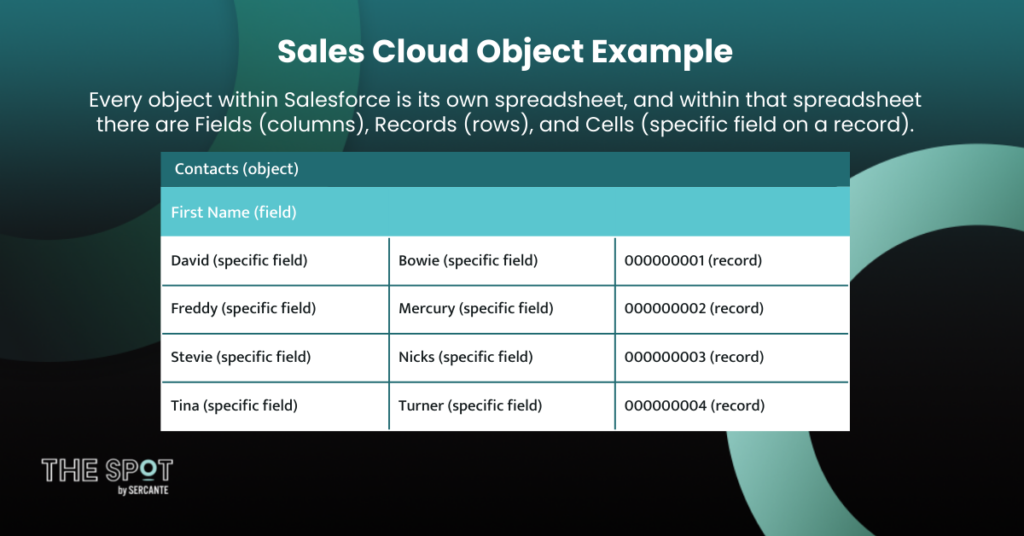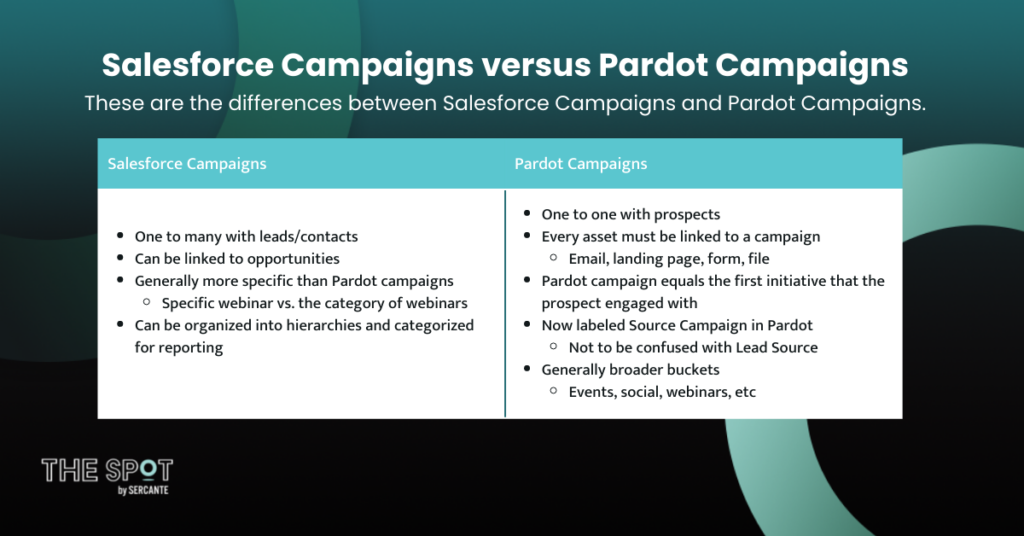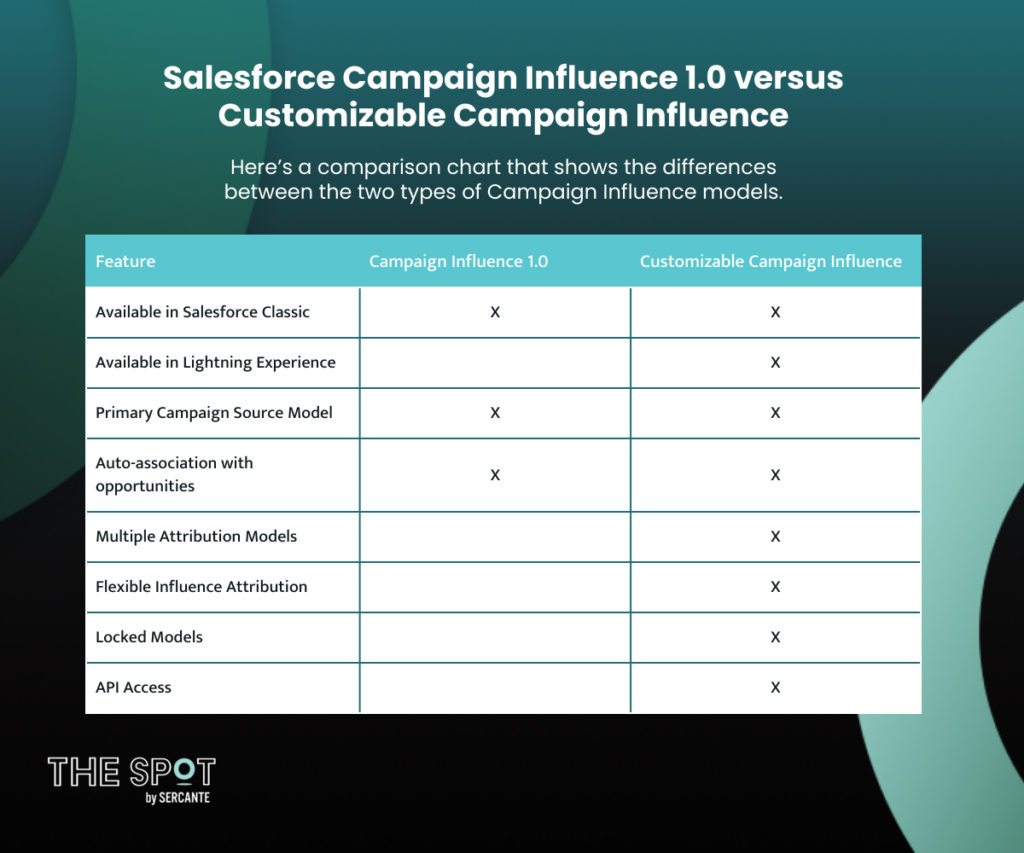As Marketing Cloud continues to grow and integrate more and more with Salesforce, the good old days of marketers working in silos within Marketing Cloud Account Engagement (Pardot) are long past due. Today, modern marketers are being asked to manage both the marketing operations and Salesforce, requiring a multifaceted skill set.
It can be difficult for marketers working in the trenches day in and day out to capture customer data, grow their audience, and prove a return on investment. With a full integration to Salesforce, those days are in the past, as we can now harness the power of Salesforce and combine that with Marketing Cloud, analytics tools, and third-party systems to create a full picture of all of your marketing efforts.
In this blog, we will highlight all things Salesforce Sales Cloud from a marketer’s perspective, including data architecture, security, sales processes, reports, dashboards, and the integration between Salesforce and Pardot.
Let’s Get to Know Salesforce
Salesforce is one of the leading Client Relationship Management systems (CRM) worldwide. At its core, a CRM helps companies grow and manage their customer base, streamline day-to-day operations, and increase profitability organization-wide. Specifically, Salesforce serves as a glorified rolodex — providing a vast array of departments, including sales and marketing, a centralized view of your customer.
Note: We often refer to Salesforce Sales Cloud as simply “Salesforce.”
Data and Relationships
Salesforce is built upon data models. Think of data models as a spreadsheet. Everything built within Salesforce is built within a spreadsheet.
When you think of it in that way, it’s so much simpler when you first login and start navigating the CRM. Every object within Salesforce is its own spreadsheet, and within that spreadsheet there are Fields (columns), Records (rows), and Cells (specific field on a record).
| Contacts (object) | ||
| First Name (field) | Last Name (field) | CRM ID (field) |
| David (specific field) | Bowie (specific field) | 000000001 (record) |
| Freddy (specific field) | Mercury (specific field) | 000000002 (record) |
| Stevie (specific field) | Nicks (specific field) | 000000003 (record) |
| Tina (specific field) | Turner (specific field) | 000000004 (record) |

Standard and Custom Objects
There are two types of objects in Salesforce — Standard and Custom objects. Standard objects are the items provided out-of-the-box when you initially purchase Sales or Service Cloud. They contain standard fields as well, though custom fields can be created. Custom objects are created by a Salesforce Administrator to store data that is specific for your organization. These objects can include the standard fields as well as custom fields.
The out-of-the-box objects included in Salesforce are:
- Campaigns: A marketing initiative (the way to create a MQL)
- Leads: Potential customers (generated MQL)
- Contacts: People sales are negotiating with (SQL)
- Accounts: Companies you do business with (customer)
- Opportunities: In-progress deals (SOW)
Connecting Salesforce and Marketing Cloud Account Engagement (Pardot)
While marketers prioritize their time within Pardot, the sales team is operating within Salesforce. By connecting the systems together, it allows the two teams to collaborate, by leveraging shared knowledge and resources via segmentation for marketing and messaging for Sales.
So, how does it all work?
- Website visitors are cookied by tracking code in Marketing Cloud Account Engagement (learn more about web tracking cookies in this blog post).
- Visitors complete Forms or Form Handlers and are converted into Prospects
- Prospects are nurtured by the marketing team and once they reach MQL status are assigned to Sales
- Prospects assigned to Sales convert into a Lead record that feeds information back to Marketing
- Once the Lead reaches the SQL status they are converted into a Contact and Account and an Opportunity is created
- When opportunities are closed, revenue is attributed back to marketing and sales, and ROI is calculated
Let’s Build a Campaign
When marketers say “Campaign,” what they are really saying is the key initiative they are running to generate leads, create an upsell opportunity, or promote a company event.
A marketing campaign is made up of a multitude of efforts that include:
- Digital Ads
- Social media
- Emails
- Search Engine Optimization (SEO)
- Print Media
- Radio/TV
Several of these efforts can be created within Pardot or connected through integrations, and they can be tracked both by marketing and sales by syncing the data back to Salesforce.
Salesforce Campaign vs. Pardot Campaign
We all know what a “Campaign” is, but there are other uses of this term within Pardot and Salesforce. Also, they have very different uses and properties. Let’s learn the differences!
Pardot Campaigns populate sources within the platform and serve as thematic touchpoints that track first touch for Prospects.
Salesforce Campaigns are used to track, manage, and report on all marketing collateral.
Together, a Pardot Campaign captures first touch, and Salesforce Campaigns can capture ongoing touch points, showing a multi-touch attribution.
Salesforce Campaigns
- One to many with leads/contacts
- Can be linked to opportunities
- Generally more specific than Pardot campaigns
- Specific webinar vs. the category of webinars
- Can be organized into hierarchies and categorized for reporting
Pardot Campaigns
- One to one with prospects
- Every asset must be linked to a campaign
- Email, landing page, form, file
- Pardot campaign equals the first initiative that the prospect engaged with
- Now labeled Source Campaign in Pardot
- Not to be confused with Lead Source
- Generally broader buckets
- Events, social, webinars, etc.
Here’s a chart that compares the differences between Salesforce and Pardot campaigns:

Data Sync and Segmentation
It is important to note that Pardot syncs on an individual level, not a company level. Records sync directly to Leads, Contacts, and Person Accounts within Salesforce. They can read Accounts and Opportunities, but they must be related to a person object with an email address. However, any object that you sync to Pardot can be used for segmentation, as long as it is tied to a Lead, Contact, or Person Account record.
You can learn more about Pardot sync behavior in this blog post.
This sync behavior becomes key in building a marketing campaign to know what you can and cannot segment your lists by, thus determining your target audience. Furthermore, the sync works both ways, allowing you to target a specific subset of Prospects based on specific data and then syncing those Prospects back to the Salesforce Campaign to track engagement.
Let’s Update the Sales Team
As marketers, we rely on the sales team to help us drive performance, segment data, and prove ROI as well as confirming marketing qualified leads. In turn, sales relies on us to see how our marketing engagements are impacting their Leads and Contacts so as not to overlap efforts.
When working with each other, you will see improved growth across the organization. This is much easier to accomplish by connecting Pardot and Salesforce.
Learn more about building strong relationships with the people who manage your Sales Cloud instance in this blog post.
Lead Assignment
Pardot was built with the primary goal of warming Prospects in order to advance them to sales as a marketing qualified lead. This is done most often through Pardot’s Scoring and Grading features, which allows marketers to know when a Prospect is ready to be handed to Sales.
Learn more about Pardot Scoring and Grading in this blog post.
Once Prospects are ready, Pardot has ways to automate lead assignment, such as Automation Rules or Completion Actions, to get that Prospect to the next level of the funnel.
Marketing Data in Salesforce
As marketers, we use data day in and day out to drive our decision making. Sales does the same, and we can arm them with additional data just as they do for us.
With the Salesforce sync, there are now a series of available fields and buttons that can empower your sales team to make more strategic decisions and to help you run even more successful campaigns. The data points provided below can be easily referenced by working with your Salesforce Administrator to add them to the Page Layouts for Contacts, Leads, and Person Accounts.
Pardot Data in available in Salesforce:
- Pardot Campaigns
- Pardot Comments
- Pardot Conversion Date
- Pardot Conversion Object Name
- Pardot Conversion Object Type
- Pardot Created Date
- Pardot First Activity
- Pardot First Referrer
- Pardot First Referrer Query
- Pardot First Referrer Type
- Pardot Grade
- Pardot Hard Bounced
- Pardot Last Activity
- Pardot Last Scored At
- Pardot Score
- Pardot URL
In addition to sharing fields between Salesforce and Marketing Cloud Account Engagement, you will also have the capability to enable the sales team to be able to add Prospects to campaigns or lists within Pardot via “Add to Pardot List,” “Add to Campaign,” or “Add to Engagement Studio.”
Let’s Prove Your Marketing ROI
By enabling Connected Campaigns, you will also be able to view Engagement History metrics within Salesforce. All of your reporting data will be easily accessible and measurable through Salesforce reporting. Through Engagement History and Campaign Influence, we are empowering the marketing team with the full force of Sales Cloud to report on their end-to-end marketing efforts.
Learn more about Connected Campaigns in this blog post.
Reports & Dashboards
Through Engagement History, you will gain five custom report types:
- Engagement Metrics on Campaigns: Provides data on all campaigns and all associated assets, including emails, links, forms, and landing pages produced within Pardot.
- Engagement Metrics on Landing Pages: Provides data points pertaining to Landing Pages produced and operated from within Pardot.
- Engagement Metrics on List Emails: Provides metrics specific to emails deployed out of Pardot, including Engagement Studio, list emails, autoresponders, and email templates.
- Engagement Metrics on Marketing Forms: Measures the performance of Pardot Forms and Form Handlers that exist outside of the platform, such as on the company website.
- Engagement on Marketing Links: Measures clicks and activity directly related to Custom Redirect links or files housed within Pardot.
These reports enable you to report on Leads and Contacts who are also Campaign Members to measure their marketing engagement, performance, and the overall success of marketing’s efforts.
You can learn more about how Salesforce handles Pardot marketing reporting in this blog post.
Salesforce Campaign Influence
Next, Salesforce offers Campaign Influence, which measures end-to-end performance and proof of ROI on all marketing efforts. Ultimately, it allows marketers to see the impact of your campaign on the closed/won opportunities.
Within Salesforce, there are influence models set up that scan all active campaigns to identify campaign members who are also assigned a contact role on an opportunity. They also verify eligibility based on additional rule criteria that can be configured. There are currently two types of Campaign Influence – Campaign Influence 1.0 and Customizable Campaign Influence.
Here’s a comparison chart that shows the differences between the two types of Salesforce Campaign Influence models.
| Feature | Campaign Influence 1.0 | Customizable Campaign Influence |
| Available in Salesforce Classic | X | X |
| Available in Lightning Experience | X | |
| Primary Campaign Source Model | X | X |
| Auto-association with opportunities | X | X |
| Multiple Attribution Models | X | |
| Flexible Influence Attribution | X | |
| Locked Models | X | |
| API Access | X |

Through these data-driven models, Salesforce uses artificial intelligence to look at engagement patterns that led to conversion and tailors attribution credit based upon Campaign Influence Eligibility Limits and Auto-Association Rules. By setting eligibility limits, you are controlling how long a campaign is considered influential. This is determined by comparing the date that a contact was first associated with the campaign and the date that the opportunity was created.
In general, you want to double your average sales cycle. For the Auto-Association Rules, you are applying specific criteria to limit the types of campaigns that are considered influential.
When combined together, Campaign Influence and Engagement History give marketers worldwide insights into their campaign performance and allows for adjustments to be made or campaigns to be built upon to improve marketing effectiveness and to improve revenue company-wide.
Check out this blog post to watch a video that explains Campaign Influence in further detail.
Sales and Marketing Teams Work Better Together
By embracing these tips and tricks, the goal is for you to learn how to use Salesforce to drive alignment between your marketing efforts and the sales team to grow your business and prove your marketing ROI.
The integration between Salesforce and Marketing Cloud Account Engagement (Pardot) plays a key role in growing your brand. It is our goal at Sercante to help you in this effort. To learn more about Salesforce and receive more in-depth training, we encourage you to register for one of our upcoming Salesforce Basics for Marketers online courses.









